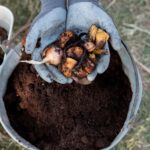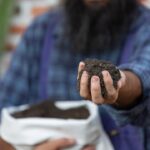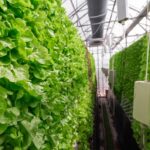In modern farming, managing pests effectively while maintaining soil health and environmental balance is a top priority. Biological control has emerged as a vital strategy in sustainable agriculture, offering a natural and safe alternative to synthetic pesticides. By using living organisms to suppress pest populations, farmers can reduce chemical inputs, enhance crop productivity, and promote long-term ecological stability.
Among the most beneficial organisms used in biological control are lady beetles. These small predators are especially effective in controlling aphid infestations, which are common in vegetable and fruit crops. Both adult and larval stages feed on large numbers of aphids, scale insects, and mites, providing essential protection for plants without harming the crops or soil.
Parasitic wasps are another key ally in the field. These wasps target specific insect pests by laying their eggs inside or on them. As the wasp larvae develop, they consume the host from the inside out, naturally reducing populations of caterpillars, whiteflies, and other common crop pests. Their targeted approach ensures minimal disruption to beneficial insects and helps maintain balance in the farming ecosystem.
Green lacewings are widely used in farms, especially for vegetables and greenhouse crops. Their larvae, often called “aphid lions,” feed aggressively on aphids, thrips, and whiteflies. They are particularly useful in organic farming systems where pest management options are limited. Their presence supports healthy plant growth and reduces the need for chemical sprays.
Predatory mites serve as effective biological control in crops affected by spider mites, a notorious pest in greenhouses and on crops like tomatoes, strawberries, and cucumbers. These beneficial mites locate and consume harmful mite species, keeping their numbers under control. Their ability to establish populations quickly makes them ideal for use in warm, protected farming environments.
Soil-dwelling pests can be managed using entomopathogenic nematodes, microscopic worms that actively hunt insect larvae in the soil. They are particularly helpful in crops affected by root weevils, grubs, and fungus gnats. When introduced to moist soil, these nematodes infect and kill their hosts, breaking the pest life cycle and protecting crops from below the surface.
Bacillus thuringiensis, commonly known as Bt, is a naturally occurring soil bacterium that produces proteins toxic to certain insects when ingested. It is often applied to crops such as maize, cabbage, and potatoes to control caterpillar pests like armyworms and corn borers. Since Bt targets only specific insects, it leaves beneficial insects unharmed and is safe for both crops and consumers.
Hoverflies are lesser-known but highly valuable allies in the field. Their larvae consume large numbers of aphids, while adults contribute to pollination. Encouraging hoverfly populations through flowering strips or habitat conservation can support pest control and crop pollination in tandem.
By integrating these biological control agents into farming practices, producers can manage pests more effectively while reducing dependency on synthetic pesticides. The success of biological control depends on selecting the right agents for the specific pests and creating conditions that support their survival. This approach not only leads to healthier crops and improved yields but also aligns with the goals of sustainable and environmentally responsible agriculture.
Join 'Farmers Mag' WhatsApp Channel
Get the latest Farming news and tips delivered straight to your WhatsApp
CLICK HERE TO JOIN






